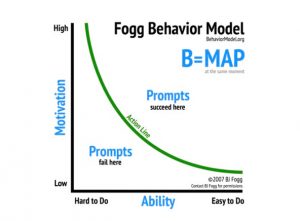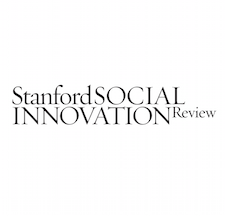In advance of the 2018 US midterm elections, Planned Parenthood Action Fund tried to increase the number of people who voted in key districts by getting volunteers to encourage their friends and families to go to the polls. The campaign involved virtual training of participants to prepare them to call 10 to 20 people they knew. But things didn’t go as planned.
“Volunteers weren’t following through and they weren’t getting back to us consistently,” said Austen Levihn-Coon, Planned Parenthood’s digital organizing director.
The organization changed course, turning the trainings into real-time phone bank sessions. The switch allowed volunteers to overcome “their psychological barrier to doing the calls, and we got much better results,” according to Levihn-Coon.

This isn’t how it usually goes with nonprofits. When it comes to engaging people to act and keeping them engaged over time, organizations often fall short, creating earnest but ineffective communication strategies and then failing to adapt when they don’t work.
How bad is it? The best performers in terms of advocacy engagement rates—environmental groups—only get 9 percent of people subscribed to their communication alerts to take three or more actions a year, according to the 2019 M+R Benchmarks Study, a review of 135 nonprofits’ digital metrics. The industry average was 5 percent.
And they don’t fare much better on social media. Only 4 percent of the followers of a nonprofit on Facebook even see the organization’s posts, unless paid promotion is involved. For every 10,000 Facebook fans of a nonprofit, only 31 of them will engage per post on average.
Nonprofits must achieve better engagement or the causes they care about will be at risk. But it will take more than just crafting narratives for their supporters or asking them to share stories. Organizations need to understand what makes people tick, and the field of behavior science can help.
Behavior = Motivation + Ability + Prompt
The Fogg Behavior Model, developed by Stanford behavioral scientist B.J. Fogg, identifies three elements that must simultaneously occur to get people moving: They must be motivated, able, and prompted to take an action. If one of these aspects is missing, people aren’t going to do what you’re hoping for.


In the model, the more motivated you are, the more likely that you will do something that is hard for you. Conversely, if you are prompted to do something that is easy for you, you don’t require much motivation to follow through. The action line divides success from failure: When people are prompted above it, they will do the behavior. When they are prompted below it, they won’t.
What does it take to make sure your efforts fall on the right side of Fogg’s action line? Based on our decades of collective experience as advocates for global issues, campaigners, and communication advisors to nonprofits, we have five recommendations.
Following this model, a successfully designed nonprofit prompt or call to action requires understanding your audience’s motivations and abilities.
The global fundraising campaign #GivingTuesday is structured around the Tuesday after Black Friday and Cyber Monday, tapping into the high motivation of many people to act altruistically as an antidote to holiday consumerism. By 2018, it had become a global campaign with a significance and timeliness of its own, raising more than $380 millionin one day and bringing the effort’s total donations to more than $1 billion since it launched in 2012.
Many nonprofits have leveraged #GivingTuesday to energize their audiences. Last year, World Bicycle Relief—a nonprofit that provides bicycle transportation in rural areas of developing countries—used the campaign to raise money for more than 1,620 bicycles, far exceeding their goal of 1,400 and enabling them to distribute more than 3,200 bikes by matching the donations. But the organization was also smart about the focus of its communication efforts. It reached out to highly motivated people who were already passionate about the sport of cycling, and provided them a perfect prompt for giving: details about a specific beneficiary of the aid, a school in Kenya where bicycles would help transform the lives of female students.
Organizations need prompts to connect with people when they are highly motivated. That means reaching out within 24 to 48 hours of a supporter expressing interest, according to Jessica Bosanko, senior vice president at M+R.
If nonprofits create prompts related to issues in the headlines, a rapid response is even more important to keep up with a 24/7, constantly shifting, and social media-driven news cycle. But how? Organizations need to have employees keeping an eye out for news, establish criteria for when a response is called for, identify the staff members who will be responsible for quickly mobilizing supporters, and create an engagement plan that supporters have the skills and motivations to carry out.
In 2018, when the Trump administration’s policy of separating immigrant families at the US border screamed from the news headlines, Americans rallied to support organizations ranging from the American Civil Liberties Union to the Texas Civil Right Project. Many organizations responded to the swell of interest by helping lawyers rapidly sign up for pro bono assignments to defend immigrant minors and adults in court.
It is difficult for people to maintain high motivation over time, so it’s important to provide a steady drumbeat of simple calls to action that make engaging easy.
The #MyTuesdayPromise campaign from #GivingTuesdayIndia encourages people to save small contributions each week throughout the year and donate the accumulated amount to nonprofits on the famous annual Tuesday.
Other organizations have used simple prompts to introduce non-fundraising requests, such as volunteering or advocacy. During the 2018 holiday season in Singapore, for example, nonprofits banded together to organize a “Giving Week.” It played off of #GivingTuesday and made getting involved more accessible by sharing ideas like micro-volunteering, when people show support through activities they like that require only small blocks of time.
New behaviors are easier to adopt if they easily fit into people’s existing routines. Campaigners should connect with their supporters in the communication spaces they already occupy, says Gautam Raju, senior campaigns director with Purpose, an organization that builds and supports social movements.
The communication platform WhatsApp, for example, has about 1.5 billion people around the world sending 60 billion messages a day. Using it has been incredibly effective in mobilizing supporters to take high-barrier political actions, particularly in countries like India, notes Raju, who works on a number of campaigns in the country. While effective, these platforms are also breeding grounds for misinformation, which nonprofits must contend with.
Raju also points to Instagram as a “great platform to connect with new supporters through adjacent issues.” For example, Purpose drummed up support for global health by finding people on the photo-sharing app who showed an interest in topics related to the cause, such as yoga, personal fitness, and food.
It can be uncomfortable for many organizations to cede control. But to create movements that grow and build momentum over time, nonprofits must give supporters the tools to connect with each other, provide their own prompts, and organize communication efforts. Relinquishing control will not only increase supporters’ loyalty to a cause, it will also take the pressure off of nonprofits to do all of the “motivate + ability + prompt” work of Fogg’s behavior model, making them more flexible in a fast-paced world.
We see this strategy at work in movements that embrace an important feature of effective supporter empowerment: using authentic communications that reflect the people who are directly involved with an issue. NeverAgain.com’s campaign against gun violence is driven by those most affected by the issue. And the Fight for $15 campaign made sure to place the voices and stories of workers at the core of its messaging by sharing videos of their struggles to get fair wages. “Workers see themselves in them, and they share that content,” says Kyle Tanner, the movement’s digital director. “It builds an organic organizing cycle.”
Alliances and Adaptation
To achieve social change, nonprofits must understand that it’s all about their supporters—their journeys, their rhythms, their motivations. Behavioral science can shed light on the way forward.
But to get more people more deeply engaged in causes, these tools alone are not enough. Nonprofits must also experiment and adapt, evolving themselves and their communication strategies when necessary. Only then will they ensure they don’t leave behind the people who will drive the changes the world so desperately needs.
This piece was written by Edith Asibey and Joy Portella. It was originally published on Stanford Social Innovation Review.




